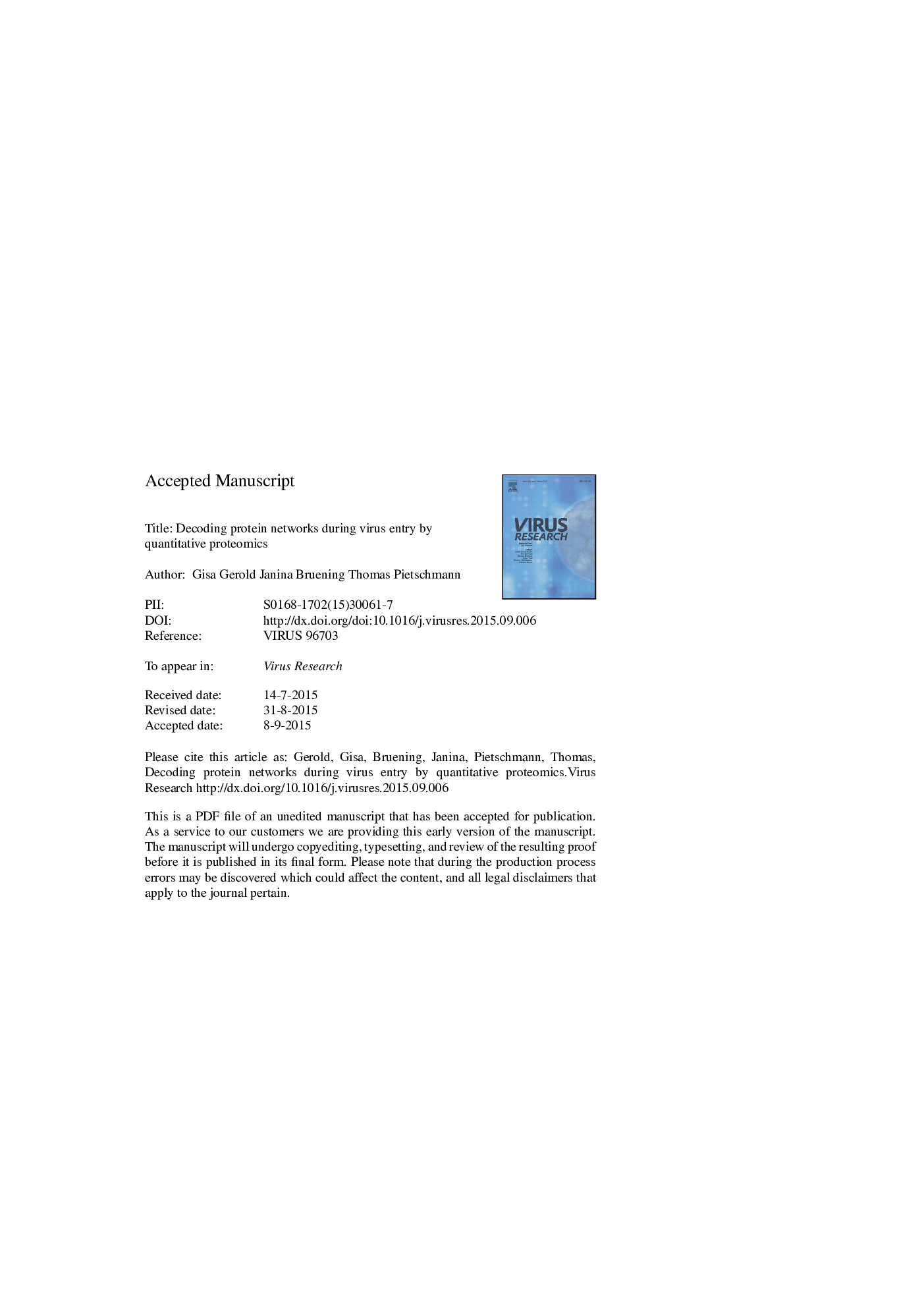| Article ID | Journal | Published Year | Pages | File Type |
|---|---|---|---|---|
| 6142108 | Virus Research | 2016 | 54 Pages |
Abstract
Virus entry into host cells relies on interactions between viral and host structures including lipids, carbohydrates and proteins. Particularly, protein-protein interactions between viral surface proteins and host proteins as well as secondary host protein-protein interactions play a pivotal role in coordinating virus binding and uptake. These interactions are dynamic and frequently involve multiprotein complexes. In the past decade mass spectrometry based proteomics methods have reached sensitivities and high throughput compatibilities of genomics methods and now allow the reliable quantitation of proteins in complex samples from limited material. As proteomics provides essential information on the biologically active entity namely the protein, including its posttranslational modifications and its interactions with other proteins, it is an indispensable method in the virologist's toolbox. Here we review protein interactions during virus entry and compare classical biochemical methods to study entry with novel technically advanced quantitative proteomics techniques. We highlight the value of quantitative proteomics in mapping functional virus entry networks, discuss the benefits and limitations and illustrate how the methodology will help resolve unsettled questions in virus entry research in the future.
Related Topics
Life Sciences
Immunology and Microbiology
Virology
Authors
Gisa Gerold, Janina Bruening, Thomas Pietschmann,
